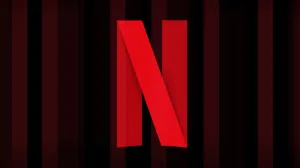For years now, Marvel’s Inhumans and X-Men have been at odds with each other in the minds of fans. Since the late 1970s, the X-Men had been among Marvel’s top-selling and most popular franchises. Marvel’s mutants were knocked down a peg when the popularity of Marvel Studios’ Avengers movies began to shift the limelight to Marvel’s other premiere superhero team, but such is the fate of corporately-owned characters.
Videos by ComicBook.com
It was then that Marvel decided to start pushing the Inhumans.
Unlike the Avengers, the Inhumans weren’t making a splash in other media, so some perceived their sudden boost in visibility as unearned. That their rise coincided with rumors of Marvel creators being forbidden from creating new mutants, X-Men characters being replaced with Inhumans and other Marvel Studios owned characters in classic group shots on merchandise, and an overall downsizing of X-Men merchandise in general led to the fan theory that the Inhumans were meant to replace the X-Men, whose TV and films rights are still controlled by 20th Century Fox. Further rumors that the X-Men line would be downsized, sidelined, or canceled altogether following the Secret Wars event, while the Inhumans line would be expanded, only added fuel to the fire.
While X-Men did not cease to exist in the aftermath of Secret Wars, the perceived tension between the two franchises was made textual within the Marvel Universe when the Terrigen Mists circling the Earth were revealed to be toxic to mutants, infecting them with a disease dubbed the M-Pox. The threat of death by Terrigen, the same substance that triggers the birth of new Inhumans, has been the backdrop of every X-Men story since Secret Wars, and the cold war between the two will turn hot in December for the Inhumans vs. X-Men event.
Whether or not it was ever Marvel’s intent crowd out the X-Men, that no longer seems to be the case. Following Inhumans vs. X-Men, the ResurrXion relaunch will increase the size of Marvel’s current X-Men line and remove the threat of the Terrigen Mists. In the real world, X-Men merchandise is starting to reappear on store shelves and Marvel Entertainment and Fox seem to have come to some new agreement as they’re visibly working together to publicize FX’s X-Men television series Legion.
And that’s as it should be. The Inhumans and the X-Men are both great concepts, but they are different concepts. While many fans felt aggrieved by the sidelining of the X-Men, few talked about what a disservice trying to force the Inhumans into the place occupied by the X-Men was to the Inhumans.
It is, in a sense, a matter of family. While mutants do get their powers through genetics – the x-gene – they are not actually blood-related as a rule. Instead, they are bound together by the thing that makes them different from the other members of their family. It is this outcast stature that draws them to each other. Blood does not bind the X-Men, only their relationships.
But the Inhumans are an actual family. At least the ones who matter are. Black Bolt and Medusa – king and queen of the Inhumans – are also cousins. Crystal is Medusa’s sister. Karnak and Triton are brothers and cousins to Black Bolt. Even some of the Inhumans greatest enemies, like Maximus the Mad and the Unspoken, are blood relatives.
This fundamentally changes the nature of the characters and their relationship. The X-Men are a found family built on their shared social pariah status, built on shared experiences. There are obvious and well-documented parallels with racism and discrimination based on inequality but even stripped of that the X-Men are the superhero equivalent of best friends who found each other at a punk show.
The Inhumans are more like Marvel’s version of The Addams Family. They’re eccentric, and weird, and don’t quite fit in, but they didn’t have to find each other. They were born into a family with established traditions and rites of passage who were mostly content to live apart from other, compared to mutants, who were forced into the public eye and burdened with building a culture of their own.
And that’s fine. Being the obscure, strange, and aloof secret royal society on the outskirts of known civilization is what makes the Inhumans cool. That status lends itself to a sense of power and prestige and to stories full of intrigue and set against unexplored, ancient and secret lore.
It was the detonation of the Terrigen Bomb, the weapon that created the Terrigen Mists clouds, and the birth of the Nuhumans, Inhumans whose Terrigenesis was triggered by the T-Clouds, that started to blur the line in an unfortunate way. Suddenly the Inhumans were public, widespread, and multiplying. Deprived of their definitive cultures and traditions, anyone would be hard pressed to tell an Inhuman from a mutant. In the end, that’s a disservice to both sides, crowding the X-Men out of their spot in the Marvel Universe, and diluting what was interesting about the Inhumans, to begin with.

The X-Men are some of Marvel’s most recognizable characters, and the Inhumans are arguably Marvel’s best kept secret. While the Nuhumans may be a flawed concept in the abstract, new Inhuman characters like Ms. Marvel, Moon Girl, and Reader are some of the best that Marvel Comics has produced in recent years.
While Marvel is keeping the exact details of the post-Inhumans vs. X-Men status quo under wraps, what we do know so far from the announcements for Inhumans titles Black Bolt, Royals and Secret Warriors and X-Men: Blue and X-Men: Gold shows signs of the Inhumans and X-Men getting back to what they each, respectively, do best. That should be cause for all marvel fans to celebrate.








